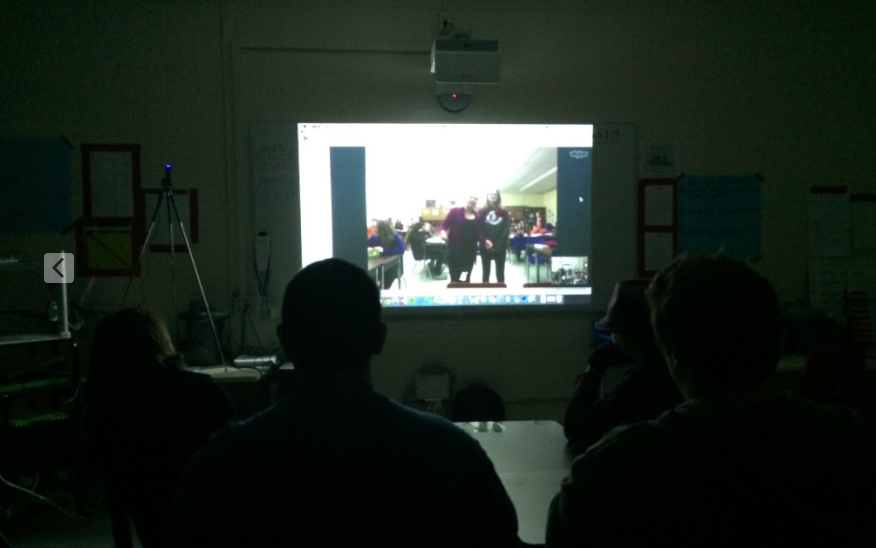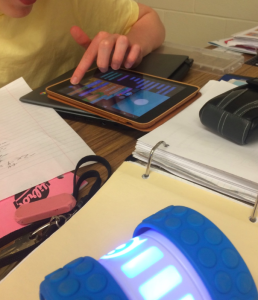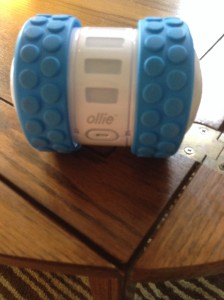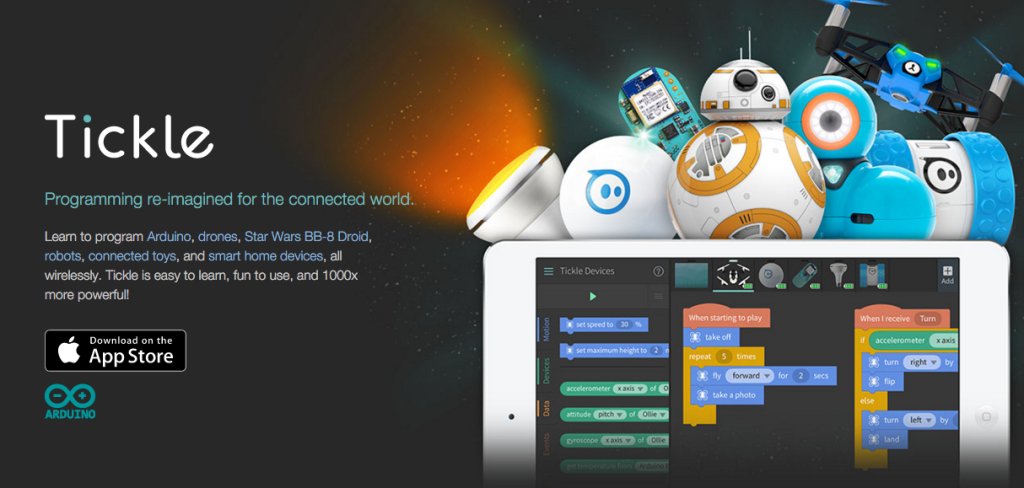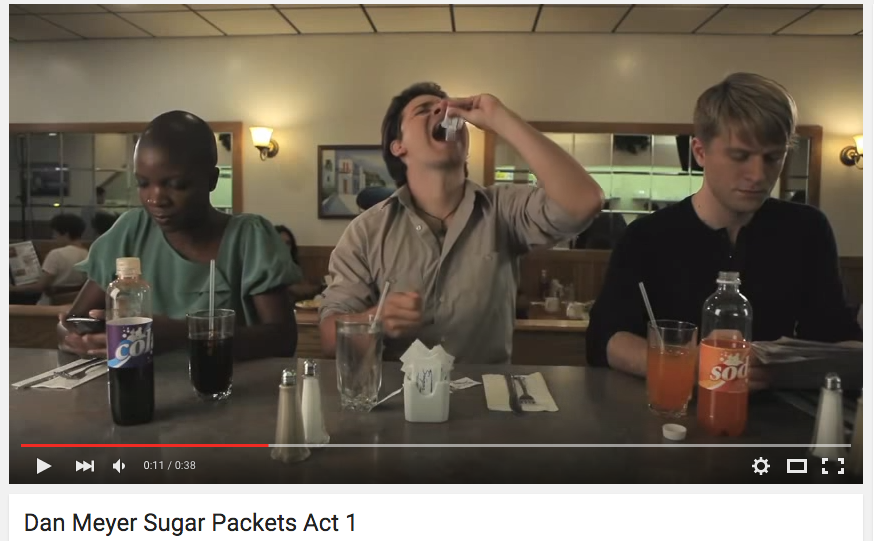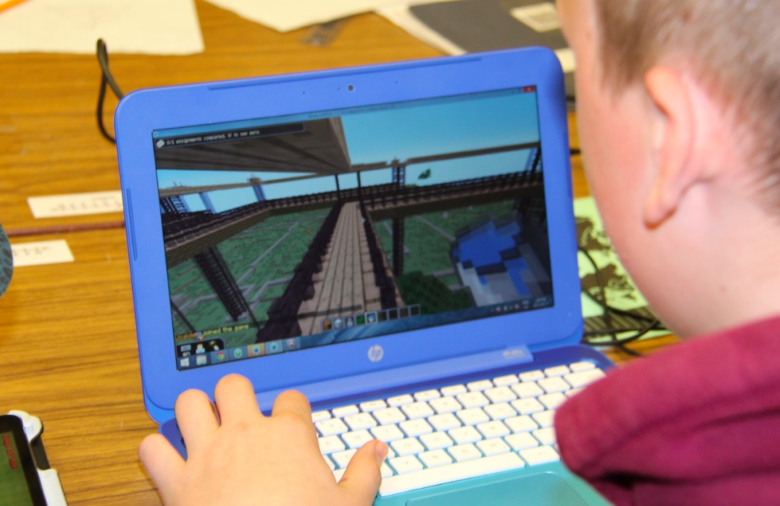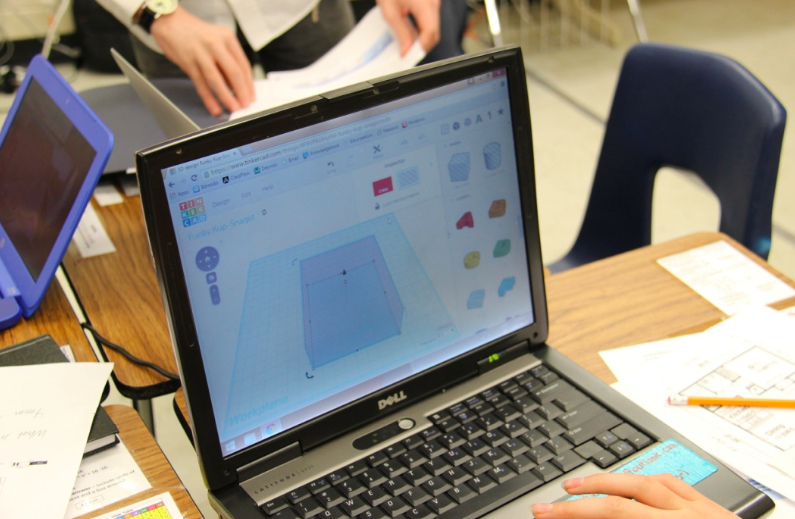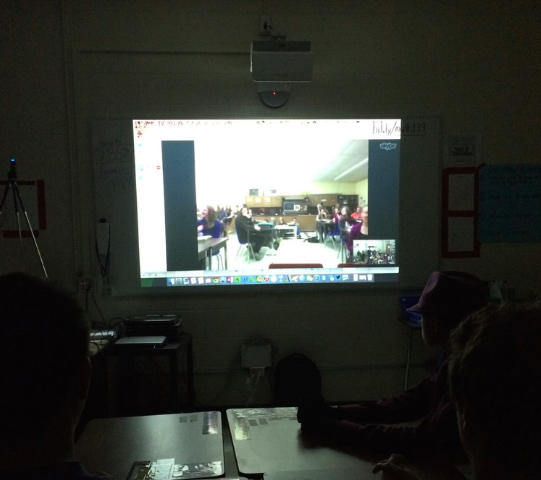Their code for Ollie in Tickle App:
]]>
After using Scratch to create programs to solve geometry equations for us (too bad we can’t use them on EQAO!) – I challenge you to figure out how to make Mr. Ollie create a regular polygon with 5 sides using the TickleApp. How about 6? 7? 8? 21? Is there a way that the same program (code) could work for all regular polygons if you entered in the number of sides?
Was that too easy? Create an obstacle course for your classmates that requires the use of an angle theorem, pythagorean theorem and/or rate of change when creating a program for Ollie to complete.
]]>
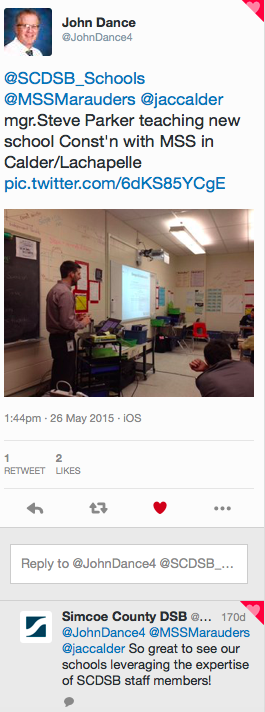 grade 9 with a new pilot program (1:1 BYOD where every student must have a laptop or tablet). Part way through their educational career they will merge with another local high school into our current building. Then, they will all move into a new building for their last year of high school together. Currently the board team is assessing the site, making designs and planning for the new building.
grade 9 with a new pilot program (1:1 BYOD where every student must have a laptop or tablet). Part way through their educational career they will merge with another local high school into our current building. Then, they will all move into a new building for their last year of high school together. Currently the board team is assessing the site, making designs and planning for the new building.
This led to a final task idea that builds on some of the work we did with proportional reasoning this semester. My students will design a new school and create a scale model using ratios. However, due to our unique situation we are able to step this up a bit to make it a bit more authentic.
Yesterday Mr. Dance (Superintendent) and Mr. Parker (an architectural technologist) from our school board came in as guest speakers. Mr. Parker ran us through the process of making decisions for school design. Right from the spreadsheet supplied by the Ministry that helps you determine the square meterage per student, number of classrooms and other spaces, up to the virtual walk through created using 3D design software. For the record, the virtual walkthrough example Steve created of our current building got “ohhhhhh’s and ahhhhhh’s” from the students.
Before I explain the rest of the students task – a quick shout out to Steve Parker who actually took my task idea and designed his presentation with my curriculum expectations in mind. He also let us totally pick his brain over the pathway he took to get such an amazing job. We learned about the college programs, different streams in the same field and experiences. He brought in the big idea of environmental impact and sustainability. Lastly, he connected to the software technology we have in our technology department in the school, to engage students in design tech courses as well.
I had no idea how a school was designed. I can’t believe I even dreamed of doing this task before going and learning with Steve myself first. As he worked through the process, he touched on ratios and critical thinking when deciding on rooms and spaces needing to meet the Ministry “benchmarks” (another new term I learned). Steve also showed us what “bubble diagrams” are and how they are kind of like visual brainstorming in proportions. I had never seen these. Students described them as “sick”.
After yesterdays session I need to revamp the task based on the great things I learned and student input. However, essentially we plan on having students use the Ministry spreadsheet to work with the ratios and end up at the correct number of classrooms, washrooms, special function rooms, etc. Then, they will create a bubble diagram and start to form that into a sketch with approximate dimensions. Lastly, they will create a scale model using their choice of 3D design software, Minecraft, Lego, cardboard, etc. Other expectations such as slope (rate of change), volume, area and perimeter will all come into play when we actually measure the field where the school is to be built, design wheelchair ramps, calculate volume for heating/cooling and calculate floorspace and costs of flooring. At the end, students will present their schools to the class. We have been invited to send in digital copies of student designs to Mr. Dance and Mr. Parker. Mr. Dance is interested in comparing student designs to those they are working on and making notes of their great ideas.
I am very excited about this project. If anyone has ever done a design project like this with MFM1P (or other grades) and has some tips and suggestions for me, I’d greatly appreciate them!
Yesterdays class reminded me that we simply can’t teach our classes in isolation. The more often we can bring in “real people” and connect to our community the better. This project and learning will be immensely deeper because of the input and help from “real” people. It will be way beyond what I could have done on my own.
]]>
I tried to assess based on the overall expectations in a portfolio-like manner. Each student had 20 file folders and would put their favorite work for each learning goal into the corresponding folder. At the end of the semester they reflected and self-assessed. It was a logistical and paper chaos nightmare. It was poorly executed (by me) and one of my first major educational fails.
Thank goodness for technology. Nine or 10 years later, I am able to revisit this method of assessment and am making it work much better. We have 22 learning goals for our class. We have in-class activities and assessments that cover these learning goals in a variety of creative, fun ways. One project might tap into three learning goals, or maybe only one. As a class we set out what makes a level 1, 2, 3 or 4 for each learning goal. Here is a snapshot of how our learning goals are organized.
We use Activegrade to track and record our assessment. Students and parents can log in and see their grades for each learning goal. This first student killed pythagorean. He missed a group activity in class where we investigated finding the area and perimeter of 2D composite shapes. He didn’t quite get caught up before the in-class assessments for that goal.
Because he wants to do better, he’s been working on improving that concept. He has a few ways to do that. He has videos he can watch. He has an online program (Knoweldgehook). It contains video lessons and EQAO-like questions to help practice. He also has a printable, paper package I created to help him review the concept, practice and assess.
This next student has a learning disability. I was still learning how to best support his learning at the beginning of the semester. I think we are getting better at supporting his needs. He will take longer to get the concepts involved in solving problems using area and perimeter of composite 2D shapes. And that is just fine. Using Activegrade, each time I add a new assessment for a learning goal, it pushes all previous assessments for that goal into 25% of the total for that learning goal. The new one counts for 75%. I can also (and often do) just delete the previous assessment when a student really struggled and it truly doesn’t reflect their understanding. As long as the assessments used for a goal collectively cover all of the achievement categories (knowledge and understanding, application, thinking and inquiry and communication), all is well. This allows different students to demonstrate their understanding in different ways if they choose. If they want to make up their own example and create a short video describing how to solve a problem – great. If they want to do paper and pen practice and then come and explain to me how they did two of the questions – great. If they want to take me into Minecraft and explain how they solve for the unknown in a ratio to figure out the length of a wall in “blocks” – great. HOW they demonstrate their understanding is inconsequential.
This way of assessment has worked great so far this semester. Students only get to see their overall marks at reporting periods. This means we aren’t focused on their “grade”, but spend most of the semester focused on “what area do you need to level-up?”.
These are a few reasons this way has worked for us:
- it has empowered students to take ownership and responsibility for their learning. They see the direct correlation to working on a specific area and their achievement.
- it allows us to add in quick, on-the-fly assessments for a specific student (example: grab a video of a student during a group problem explaining a concept to the rest of his group)
- it provides a couple of in-class assessments for each learning goals. Those who are not as engaged in assessment and just want to participate in class and not think about it are set.
- it allows for all the accommodations we integrate to be effective (extra time, multiple methods of assessment, etc.)
- accommodations are no longer viewed as “cheats”. Everyone could make use of extra time, different methods of assessment. It values different ways of learning without appearing “unfair”
- it lets STUDENTS take ownership for differentiating ways that work for them
I started off the semester thinking that I would have multiple online, digital versions of “levelling up” each learning goal. We have Knoweldgehook, which is an awesome tool for this. However, I quickly realized that I also needed a paper and pen version of levelling up each learning goal for a few reasons;
- MANY of our students do not have internet access at home
- paper versions help students attending our program for lengthy suspensions
- paper versions work for students who are catching up in alternative learning environments such as the resource room, student success or credit save days when a device is not always available
- paper versions can be done in the hospital, on the bus, on the train, on a plane, etc.
- to differentiate – some students truly prefer paper and pen
I am always shocked at how many times in one semester I am asked to “send work” for a student. Fifteen-twenty times each semester I am asked to hand over a hard copy of what a student will or has missed in class. When you teach through problem solving, assess with tasks more than tests and use technology regularly this is actually very difficult. Class is no longer a teacher directed lesson followed by practice. Handing over a Minecraft task or ClassFlow interactive activity is actually quite difficult. Having paper versions of each learning goal, has let me focus on keeping those interactive activities the base of our course while meeting the varied needs of students throughout the semester.
The curious part of assessing this way is that at midterm I ended up with no students in the Level 1 range. Other than some special cases of non-attending students, we have a couple students in the level 2 range and the rest are in the level three or four range. I am way happier when students “level up” their assessment and show me a good solid understanding of a concept instead of simply leaving a student with a poor understanding of a concept and moving on. They are way better prepared for the next grade. The few students in the level two range are there because they simply need more time with the content. If we can find that time within our 110 hour credit-based semester system, I am convinced they will move into the level three range as well.
My one concern with assessing this way is the potential to turn my class into a simple drill-and-kill, mastery class. I highly value the creative and critical thinking aspect of math. The FIRST assessments for all learning goals are always interactive, creative, problem solving activities in class. Levelling up with videos and practice is only for when that didn’t work. For example, we assessed student ability to set up and solve ratios through Educreation videos made after creating scale models in Minecraft or 3D printing. It is almost impossible for a student who missed this in-class activity to catch-up on it. The structure of 75-minute periods in high school don’t make catching up on interactive class activities easy. The videos and alternative assessments are great to ensure that this student doesn’t get left behind. Not the best learning option – but a great alternative.
In the future we plan on improving this system by:
- creating and collecting better “level up” resources (videos, assessments, tutorials, etc.)
- creating a rubric for each of the 22 learning goals with examples and explicit details on what makes a level 1, level 2, etc.
I have decided that my assessment is effective if it motivates and empowers students to actually improve their understanding. How do you use assessment to motivate students?
]]>Today we used Dan Meyers problem “Nana’s Chocolate Milk” to draw out and review those methods and add one more into our toolbox. Students completed the problem in many different ways. When students solve problems like this BEFORE we “teach” the lesson, it often provides us with the opportunity to build confidence in at-risk students. Students who do not normally step up and share are encouraged to share their method because it was so different/original/exciting. Today that happened again. The group of students actually said “really?” with pride when Ms. Lachapelle said that their method was unique and that she’d love them to share. They even said “thank you” to her after. Every time we teach THROUGH problem solving, we make small gains building confidence with at least one student.
]]>The observing teacher often says “Can I add something to that?” during a lesson. It’s a quick interruption to repeat, highlight or state something in a different way based on observing the students needs. It can also often be to bring students attention to the “meta” component of math or learning.
The second most important phrase we use is by the teacher leading the lesson or small group. It is “do you have another way to explain this?”.
Having two teachers in our class has by far let me grow more as a teacher than any other professional development activity I have ever participated in. It has also, hands-down, been the best initiative to support improved student success in math that I have seen. Students see more ways of solving problems. More teaching strategies. More assessment strategies. More attention in general. More support when needed. They also see teachers learning from each other every single day. We often have conversations in front of our students that start with “REALLY? I had no idea!”. Or, ” I had never thought of that”.
Every so often students get confused when we’ve each told them conflicting instructions without realizing it, but we can always solve that with a laugh and some humor.
]]>Other than a few little mishaps like some student-caused flooding in Minecraft and the yours truly being blocked in a cave in by some students who knew I couldn’t figure my way out, students did really well at staying on task today (grin).
Many students taught themselves how to use Tinkercad to make their 3D models and created their entire model. We taught no lessons on Tinkercad nor Minecraft. Students were pretty much on their own and had to rely on each other. They were great at sharing tips and tricks they found. Myself and Ms. LaChapelle let the class know when a student figured something out, so others could learn from them. We sat down beside students and learned with them.
I was worried that this project would take way beyond 3 periods, or that we’d lose sight of the math expectations. Part way through the period I couldn’t see any progress in a students’ Minecraft work area, so I asked him what he was up to. He replied that he had been building his skate park underground. I had no idea how to get there, or how he did that so he showed me. I caught it on video and asked him some ratio questions while I could – just to see if we were thinking in terms of “proportional reasoning”. Tomorrow I’ll really get to see when students set up their ratios using the iPads and Explain Everything. Here is a quick video of him showing off his skate park. He got stalled on some basic multiplication facts in his head as I put him on the spot, but he definitely understands the idea of ratio. This activity has provided multiple entry points and the ability for students to use ratios that are easier or more difficult to work with.
Below is a 7-minute, rambly video about our activity and sharing some of our student creations. I literally just hit record and started exploring what they had created. Far from a polished video, but I wanted to archive the process.
3D Print and Minecraft MFM1P Project from Jac Calder on Vimeo.
]]>We started using Dan Meyers 3-Act Math problem “Sugar Packets”. After watching the video, students were engaged and grossed out at the thought. Then, they were each given a different size of beverage (juice boxes, chocolate milk, small soda cans, large soda bottles, iced coffee, iced tea, gatorade and lower sugar gatorade, powerade, snapple, vitamin water, etc.). Groups had to figure out how many sugar packets were in each beverage container.
After collecting all that data, we talked about if this was a fair comparison to base our decisions on. Students decided that it was not fair because each container was a different size. Groups then began the difficult work of figuring out how to find the number of sugar packets in a 591 mL sized bottle of their beverage.
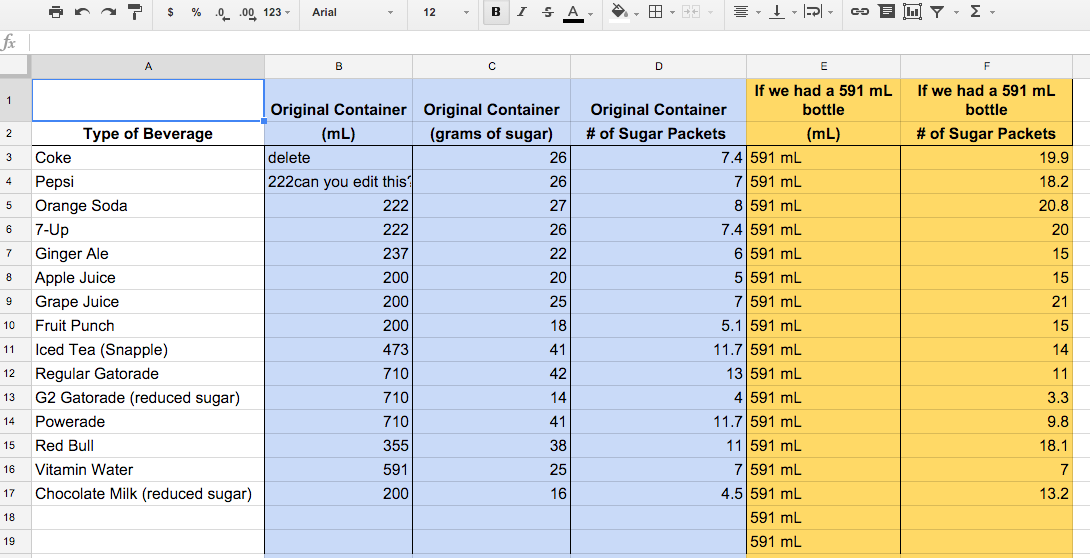
Some groups found a unit rate (number of sugar packets in 1 mL and then multiplied by 591 mL), some groups found out how many “times” larger the 591 mL bottle was and then multiplied the number of sugar packets by the same. Lastly, one group used an additive method to figure out how many of the smaller containers were in the larger one and then did the same thing to the sugar packets.
We consolidated by setting up ratios and then comparing a few different algebraic methods for solving it. We ended up with a great discussion on types of beverages, types of sugar (fruit sugar, liquid sugar, corn syrup) and ratios.
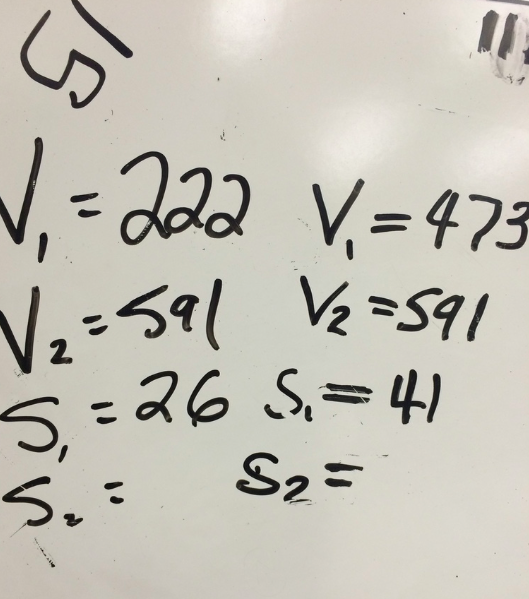
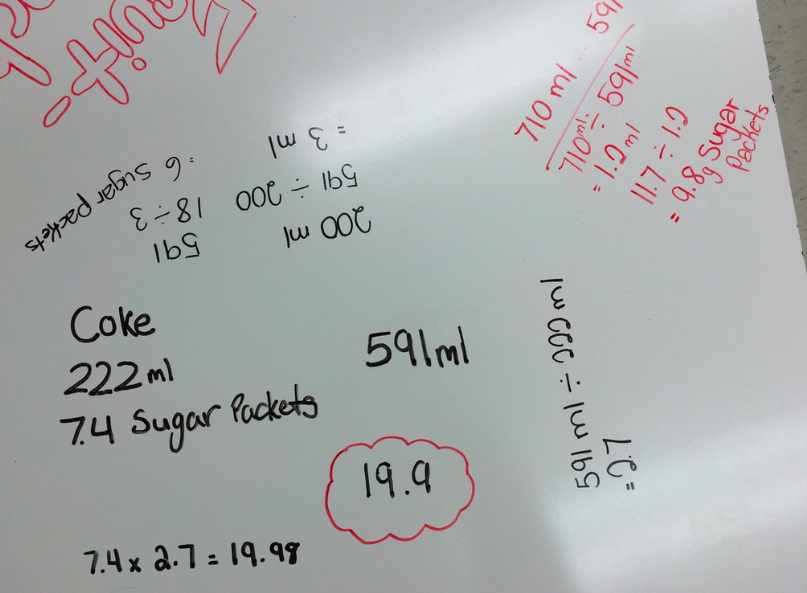
- Minecraft scale model – create a scale, find or measure the dimensions of an object or room and build a scale model in Minecraft
- Art enlargement – find or create a small image and enlarge it using a scale created by the student
- 3D Printed scale model – create a scale, find or measure the dimensions of an object and design a scale model of it. Then print using one of our 3D printers.
Of course, my very creative students pushed me to offer even more options. “Could we create a Lego scale model?”. Well, yes… that would be spectacular. Anything to show me that you understand ratios.
Much to my dismay, we have limited time to do this task. If we had my way, I’d do creative projects like this all semester and go really very deep. However, we have an amazing final task planned for this class which will relate back to this task. It will let us go much deeper. We will only have 2-3 periods to work on this one.
As teachers, we are moving so very far out of our comfort zones on this one. I had never played Minecraft before. Thanks to an OTF Co-op Ministry grant, I now have a server set up through the folks at Minecraft EDU and a world with 10 really neat workspaces for groups. I now know what it means to “teleport to spawn location”. Yikes. I’m much more comfortable with the 3D Printer, but to be honest the design aspect is still very new to me. I have not spent much time learning how different design programs work. My students in previous classes figured out what they need to design what they wanted. I spent the time troubleshooting the file types and 3D printer itself.
Some students in our class were worried because they bring their own tablets to class (not laptops) and the 3D design program I showed off works on laptops best. We solved that problem too. Students are pretty excited. About half chose Minecraft and half 3D printing. Only 1 or 2 chose the art task, which surprised me.
Our assessment will ultimately bebased on the presentation and explanation of how they chose their scale, and how they set up and solved ratios to determine 3 or 4 dimensions of their model. This may be done in Educreations, using a cell phone video camera, Explain Everything, using Camtasia screen capture on a laptop, conferencing with students or a presentation to the class.
The next couple of days are going to be crazy, insane and totally out of my comfort zone. If you have any tips or tricks for us, we’d greatly appreciate it. My fingers are crossed that this works out!
]]>– participating in a global project looking at deforestation in Borneo (Deforestaction and Earthwatchers) in grade 9 and 10 science
– Google Hangouts, twitter chats and web conferences with Chris Hadfield, the ISS and other astronauts in grade 9 science while we compared neutron radiation all over Canada and on the ISS
– global malaria projects in grade 12 science
– collaborative music creating projects with students from all around the world with the Seventh Fire alternative program
– web conferences and Skypeing with other classes and former child soldiers in learning strategies
– video conferences with classes and scientists on Tundra buggy’s in the arctic with learning strategies and geography
– co-creating videos with classes from local elementary classes through video conference and Edmodo in grade 10 science
– teaching elementary classes about scientific concepts and learning from them in grade 10 science
– creating radio shows with twitter questioning for elementary students in learning strategies
This semester I am teaching math. I have been very focused on supporting the development of creativity and critical thinking through teaching through problem solving in Grade 9 Applied Mathematics along with the impact of different forms of feedback. I have struggled over and over again to find global or cross-curricular projects that will work for our rushed timelines in MFM1P. We have plenty of excellent, thought-provoking activities in class using tools such as ClassFlow, OneNote, Knowledgehook, DragonBoxEDU, PearDeck, Minecraft and Turtle Art. We have many real-world connected problems to use for context using popcorn, video, really big gummy bears, chocolate milk, etc. I still struggled to find ways to connect beyond our four walls. It has bothered me all semester. I know how engaging and organic the learning stemming from integrated projects can be and was stretching to find something (anything) that fit with MFM1P.
Heather Theijsmeijer (@HTheijsmeijer) broke my “collaboration block” (similar to writers block). Her Grade 9 Academic Science class sent a survey out to the world via twitter collecting data about energy use, home heating and internet use in households. She describes the science project here. When we accessed the spreadsheet of results this week there were over 600 responses, from all corners of the world.
My math class took the spreadsheet of data and calculated percentages. What percent of participants from the UK heat with wood? What percent of participants from New Zealand heat with oil? We also calculated the average daily TV and internet use approximated by participants from different countries. What resulted were great conversations in data collection, bias, statistics and geography. The class created a list of questions and sent them to the science class. Today we Skyped with them and got to hear the thoughts and ideas that they’ve formulated from their research into energy use and production in various countries.
My math class got to see how math connects to other subject areas such as geography and science. They became masters of converting between fractions, decimals and percent. They started developing some proportional reasoning skills. We will be able to use this data when studying relationships and scatter plots as well as proportional reasoning. What a great opportunity to learn about another area of Ontario and share our work with others. We will share data and visual representations we create with the data to Heather’s class so that they can use them in their projects if helpful. They have taught us about energy use and production in countries all over the world.
THANK YOU Heather. I live for collaborative projects and student learning is always so much richer, authentic, organic and deeper when our projects take us beyond our own four walls. EVEN IN MATH 
